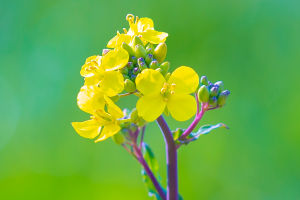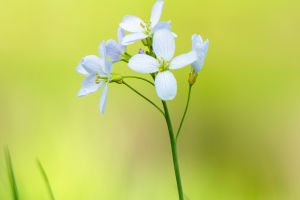Grow Hyacinth in Soil
Hyacinths are beloved for their vibrant colors and intoxicating fragrance, making them a perfect addition to any garden or home.
Growing hyacinths in soil is a rewarding experience, as they burst into beautiful blooms in the spring, filling the air with their sweet scent.
Dear Lykkers, let’s explore how to plant and nurture these stunning flowers in soil to enjoy their delightful blooms!
Choosing the Right Hyacinth Bulbs
Start by selecting healthy, high-quality hyacinth bulbs. Look for bulbs that are firm, large, and free from any signs of mold or damage. Bulbs with a circumference of at least 6 inches are ideal, as they are more likely to produce robust blooms.
Preparing the Soil
Hyacinths thrive in well-draining soil that is rich in organic matter. Here’s how to prepare the perfect soil for your hyacinths:
Choose a Sunny Spot: Hyacinths prefer full sun or partial shade. Pick a location that gets at least 4-6 hours of sunlight daily.
Amend the Soil: Loosen the soil to a depth of about 12 inches and mix in compost or organic matter to improve drainage and provide nutrients. The soil should be slightly acidic to neutral, with a pH level between 6.0 and 7.0.
Planting Hyacinth Bulbs
Planting hyacinth bulbs at the right time is crucial for a successful bloom:
1. When to Plant:
Plant hyacinth bulbs in the fall, about 6 to 8 weeks before the first expected frost. This timing allows the bulbs to establish roots before winter.
2. How to Plant:
Dig Holes: Dig holes that are 6-8 inches deep, with a spacing of about 4-6 inches between each bulb.
Place the Bulbs: Place the bulbs in the holes with the pointed end facing up. Cover the bulbs with soil and gently press down to remove air pockets.
Water Thoroughly: Water the bulbs well after planting to help them settle into the soil and establish roots.
Caring for Hyacinth Plants
Once planted, hyacinths require minimal care to thrive:
1. Watering:
Keep the soil consistently moist, but not waterlogged. Water hyacinths deeply when the top inch of soil feels dry, especially during dry spells. Be careful not to overwater, as this can cause the bulbs to rot.
2. Mulching:
Apply a layer of mulch, such as straw or wood chips, over the planting area to help retain moisture, regulate soil temperature, and prevent weed growth.
3. Fertilizing:
Feed your hyacinths with a balanced, slow-release fertilizer in early spring when the shoots first appear. Follow up with another feeding after flowering to help the bulbs store energy for the next season.
Encouraging Blooming
To ensure your hyacinths bloom beautifully:
Remove Faded Flowers: Cut off spent flowers to prevent the plant from using energy to produce seeds. This practice, known as deadheading, encourages the bulb to store energy for the next growing season.
Let Foliage Die Back Naturally: Allow the leaves to remain on the plant after flowering until they turn yellow and die back naturally. The foliage is essential for photosynthesis, which replenishes the bulb's nutrients for the next bloom.
How to Force Hyacinths in Soil and Water // Forcing Hyacinth Bulbs to Bloom Inside
Video By Northlawn Flower Farm
Common Problems and Solutions
1. Bulb Rot:
Bulb rot can occur due to overwatering or poor drainage. To avoid this, plant bulbs in well-draining soil and avoid watering excessively.
2. Pests and Diseases:
Hyacinths are relatively pest-resistant but may occasionally suffer from aphids or fungal infections. Use an organic insecticidal soap for pests and ensure proper spacing for air circulation to prevent disease.
Growing hyacinths in soil is a delightful way to bring color and fragrance to your garden. With the right care and attention, these vibrant flowers will reward you with stunning blooms year after year. From choosing healthy bulbs to providing proper soil, watering, and fertilizing, these simple steps ensure a flourishing hyacinth display. So, roll up your sleeves, get planting, and enjoy the magic of hyacinths in your garden!


